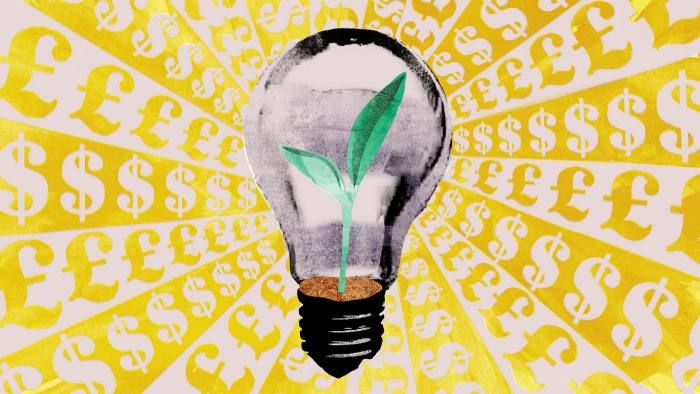Warm reminder from FT中文网: If you are interested in the content of FT中文网, please search for “FT中文网” in the Apple App Store or Huawei App Market, download the official application of FT中文网, and pay for subscription. I wish you a happy use!
Investors are now a bit like toddlers, eager to seize the next energy technology to save the planet. But its enthusiasm for offshore wind power, batteries and green hydrogen ignores a very simple fact.
As long as we better deploy the energy we are already consuming, we can immediately reduce carbon emissions while still making money.
More than two-thirds of the energy used in the United States in 2020 is wasted and is not effectively used. The situation in Europe and Japan is similar. In tackling climate change, controlling this waste or turning wasted energy into use is a huge opportunity to buy time for more far-reaching innovations.
This also makes financial sense. Although the government has to use subsidies to attract consumers to buy electric cars and heat pumps, companies’ exploration of energy efficiency can pay for themselves. Unlike carbon capture or industrial batteries, the technologies on which many improvements depend are readily available. And as the prices of oil, coal, and natural gas rise, the potential for financial gains will only increase.
According to the US Department of Energy, in the industrial sector, power generation, and transportation, the scale of waste—and therefore the opportunities—is particularly huge.
“There are some profitable solutions that you can adopt right now. Not only can this save the company money and reduce carbon emissions, but… these wastes are a clue to why there are productivity problems in the West,” the UK first Jonathan Maxwell, head of SEEIT, an investment trust focused on energy efficiency, said. The fund became a constituent stock of the FTSE 250 index last month, with a market capitalization of 1.03 billion pounds.
SEEIT supports a wide range of projects, including some technologies that have existed for many years. It recently acquired a wholly-owned U.S. power company that recycles energy wasted in the manufacturing process. Primary Energy operates several steel plant ancillary facilities in the Midwest. They use excess heat and natural gas waste from the steelmaking process to drive steam turbines to generate electricity.
Although Primary Energy has been cooperating with companies such as ArcelorMittal since the 1990s, the decarbonization campaign has sparked wider interest. The company is negotiating with a cement group to expand its business into the industry. “We are not wind or solar, and we are not glamorous. But we are exactly what we need,” said Mo Klefeker, president of Primary Energy.
In fact, in some areas, the benefits of improving energy efficiency are so significant that many companies have emerged to provide retrofit services without upfront fees.
Future Energy Solutions provides lighting services to more than 1,500 customers in Europe and the United States. It provides 15 years of organizational services for financing, installation and maintenance of high-efficiency LED lights in exchange for a share of energy savings. Its customers include individual franchisees of Burger King and Q-Park parking lots in 7 countries.
Lighting accounts for 5% of global carbon dioxide emissions. Mordor Intelligence predicts that by 2025, the size of the US lighting service market will be five times its current size, reaching US$316 million. FES chief executive Peter Hawksworth (Peter Hawksworth) said, “I don’t understand why some people don’t switch to” LED bulbs. “But the potential is also great.”
It is easy to dismiss efficiency gains as a short-term opportunity. Companies switching to LEDs can only happen once. Many companies, from JPMorgan, Santander, to supermarkets in Iceland, have already done so.
But Roche’s experience shows that “fighting a protracted war” also has advantages. The Swiss drugmaker has set energy efficiency targets since 2006. Since then, its heat and direct greenhouse gas emissions have been cut by more than half, and its electricity consumption has also been reduced by 38%. The company’s current goal is to reduce energy consumption and emissions by another 10% by 2025.
